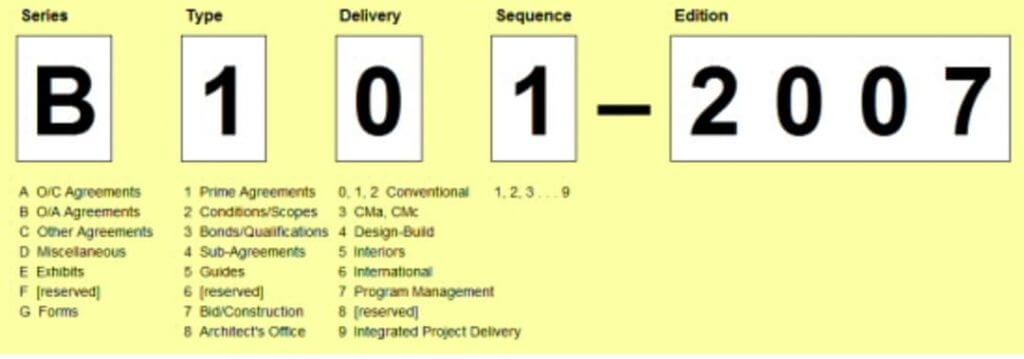Most popular forms for design and construction projects
Interested in getting unlimited access to our full 250+ library of agreements and forms?
Visit the link to learn more: https://shop.aiacontracts.com/unlimited-subscription
AIA Contract Documents offers construction legal forms for all design and construction project delivery methods and for all projects sizes. The variety of construction forms includes qualification statements, bonds, requests for information, change orders, construction change directives, and applications for payment, billing forms, and certificates for substantial completion. Here are the AIA’s 10 most popular, downloadable, design and construction forms.
#1. G702-1992, Application and Certificate for Payment
AIA Document G702™–1992, Application and Certificate for Payment provides convenient and complete forms on which the contractor can apply for payment and the architect can certify that payment is due. Contractor-Subcontractor version, G702S-2017, is also available.
#2. G703™–1992, Continuation Sheet
AIA Document G703–1992, Continuation Sheet breaks the contract sum into portions of the work in accordance with a schedule of values prepared by the contractor as required by the general conditions. Contractor-Subcontractor version, G703S-2017, is also available.
#3. G701–2017, Change Order
AIA Document G701™-2017 is used for implementing changes in the work agreed to by the owner, contractor, and architect.
#4. A305-1986, Contractor’s Qualification Statement
AIA Document A305™–1986, the contractor may provide a sworn, notarized statement and appropriate attachments to elaborate on important aspects of the contractor’s qualifications.
#5. G704–2017, Certificate of Substantial Completion
AIA Document G704™–2017 is a standard form for recording the date of substantial completion of the work or a designated portion thereof. The contractor prepares a list of items to be completed or corrected following substantial completion, and the architect verifies and amends this list.
#6. G706-1994, Contractor’s Affidavit of Payment
AIA Document G706™–1994 requires the contractor to list any indebtedness or known claims in connection with the construction contract that have not been paid or otherwise satisfied.
#7. A312-2010, Payment Bond
AIA Document A312™–2010 is a bond which covers the contractor’s obligations to pay subcontractors and others for material and labor. The A312-2010, Performance Bond is also available.
#8. G706A-1994, Contractor’s Affidavit of Release of Liens
AIA Document G706A™–1994 supports AIA Document G706™–1994 in the event that the owner requires a sworn statement of the contractor stating that all releases or waivers of liens have been received.
#9. G202-2013, Project BIM Protocol
AIA Document G202™–2013 is a form that is coordinated for use with AIA Document E203™–2013, Building Information Modeling and Digital Data Protocol Exhibit. Its purpose is to document the agreed upon protocols and procedures that will govern the development, transmission, use and exchange of building information models on a project.
#10. D200–1995, Project Checklist
The project checklist is a convenient listing of tasks a practitioner may perform on a given project. This checklist will assist the architect in recognizing required tasks and in locating the data necessary to fulfill assigned responsibilities. It may also serve as a permanent record of the owner’s, contractor’s and architect’s actions and decisions
The AIA numbering system organizes AIA documents alphanumerically by series, based on document use or purpose, and by family, based on project type or delivery method.
Under the system, AIA document numbers include the letter of the Series, and three digits representing document Type, project type or Delivery method, and Sequence, plus the year of the Edition. In the following example, AIA Document B101™–2007, Standard Form of Agreement Between Owner and Architect, is a prime owner/architect agreement in the Conventional (A201) family, and is first in a sequence of owner/architect agreements that includes AIA Documents B102™–2007, B103™–2007, B104™–2007, B105™–2007, B106™–2010 and B108™–2009.

AIA documents are grouped by family and by series. This dual method of organizing the documents makes it quicker and easier for users to select the documents appropriate for their projects. Documents in the same family are coordinated to tie together the various legal and working relationships on the same project types or delivery methods. They are linked by common terminology and procedures and may also adopt one another by reference. The relevant terms of AIA Document A201™–2007, for example, are adopted by reference in several agreements including AIA Documents A101™–2007, A102™–2007, A103™–2007, A401™–2007, B101™–2007 and B103™–2007. Documents in each series reflect the purpose of the document. For example, owner/contractor agreements are found in the A series, and contract administration forms are in the G series. For purposes of reference and information, sample copies of current AIA documents are contained in the Architect’s Handbook of Professional Practice, available online at the AIA Bookstore or through local components. Sample copies of all the current documents are included on the CD-ROM that accompanies the Handbook. The Handbook also includes a section titled the “Documents Finder,” which provides a brief synopsis of each document, organized by family.
AIA documents are intended for nationwide use and are not drafted to conform to the law of any one state. With that caveat, however, AIA documents provide a solid basis of contract provisions that are enforceable under the existing law at the time of publication. A significant body of case law concerning contracts for design and construction is based largely on the language of AIA standard forms. Those court decisions are discussed in The American Institute of Architects Legal Citator, published by Matthew Bender & Company, Inc. Recent cases are summarized and all cases are keyed to the specific provisions in the AIA documents to which they relate. The AIA’s drafting process is a thorough and deliberate approach that strives to achieve a fair balance among interests affected by the contract documents. The process is based on the cooperative input of a Documents Committee of practicing architects who have been appointed based on their experience, regional diversity, and variety of practices. Beyond the input of these committee members, the AIA also solicits feedback from owners, general contractors, engineers, subcontractors, sureties, lawyers, insurers, and others. By considering the opinions of a broad range of disciplines, the AIA strives to publish documents that account for the best interests of all parties affected by them.
